PHY 1151
Summer 2002
Third Hour Exam
June 26, 2002
| Return
to Calendar |
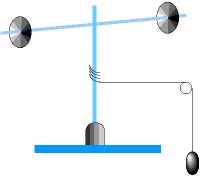
1. Consider a rotational frame like the one sketched above. The moment
of intertia (or the "rotational mass") of the frame is
I = 0.010 kg m2
A string is wound around the central shaft. The radius of this shaft is 0.75
cm (or 0.0075 m). The string goes over a lightweight, frictionless pulley
and is attached to a hanging mass of 0.250 kg.
What is the acceleration of the hanging mass?

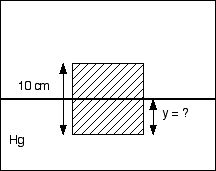
2. A 10-cm cube of copper floats in mercury.
How much of the copper cube is submerged beneath the surface of the mercury.
 (Cu) =
8,920 kg/m3
(Cu) =
8,920 kg/m3
 (Hg)
= 13,600 kg/m3
(Hg)
= 13,600 kg/m3

3. Water flows through a horizontal pipe that changes area from 25 cm2
to 15 cm2. In the 15 cm2 region, the flow velocity
is 5.0 m/s.
a) What is the flow velocity in the 25 cm2 region?
b) What is the pressure difference between the two regions?
 (H2O)
= 1000 kg/m3
(H2O)
= 1000 kg/m3
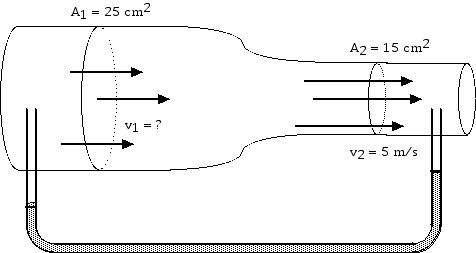

4. Consider a steel wire, 1.000 m long and 0.5 mm in radius. How much
does is stretch when a weight of 200 N is suspended from it?
Young’s modulus for steel is Y = 20 x 10 N/m2
.

Concept Questions:
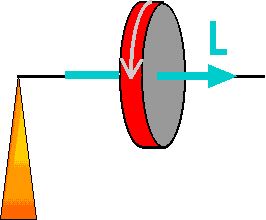
i. Above is a side view of a spinning gyroscope.
When viewed from the pivot, the gyroscope is rotating clockwise, as shown by
the arrow. When it is released, will the right end of this gyroscope precess
into the page or out of the page?
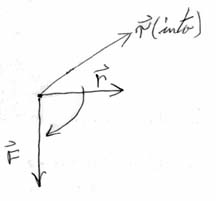
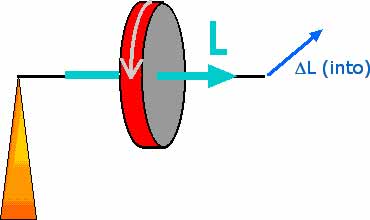
The gyroscope precesses INTO the
page.
ii. A solid disk and an open hoop are released from the same height on
an inclined plane. Which reaches the bottom first? And why?
The solid disk has a smaller moment of inertia so it is easier
to rotate so it reaches the bottom first.
iii. Why do people commonly refer to the weight of a ship
as its “displacement”?
The weight of the ship is just balanced by the bouyant force
of the water and the bouyant force of the water is equal to the weight of the
water displaced by the ship.
iv. As air moves across the top of a chimney, will air be pushed down
into the chimney and into the house or will air be pulled from the house and
up and out of the chimney. Why?
Moving air exerts less pressure so as air moves across the
chimney top the pressure is less than that of the still air inside the house.
With less pressure at the top and more pressure inside, air flows from the inside,
up through the chimney, and to the outside.
| Return to Calendar
|









